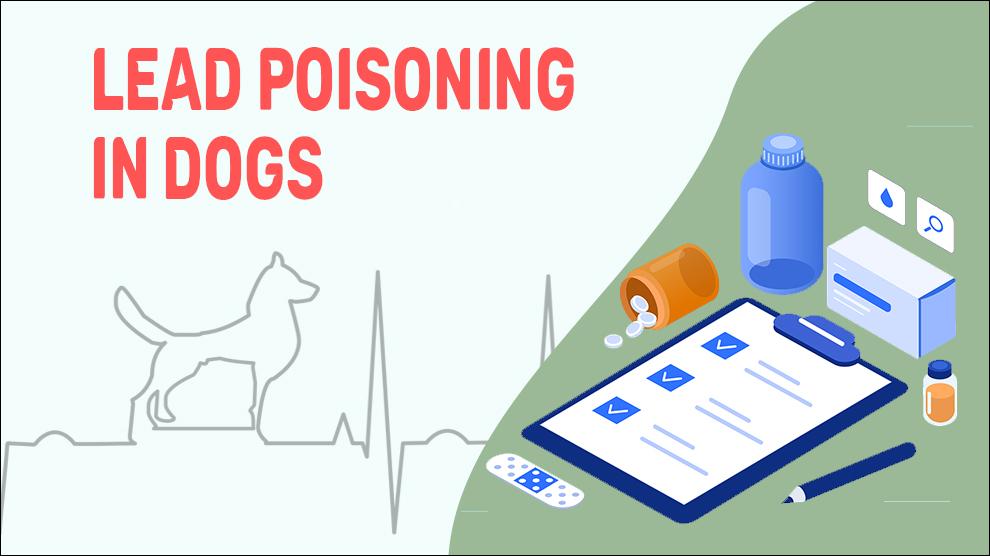What Is Lead Poisoning In Dogs?
Lead poisoning is toxicosis due to inhalation or ingestion of lead-containing substances. Also known as plumbism, toxicity can happen through both acute (sudden) and chronic (long-term) exposure to the metal.
Through the ability to substitute itself for calcium and zinc (both important minerals for normal cell functions), lead damages the cell and affects normal biological processes. Lead concentrations above 0.25 ppm (or 25 mcg/dl) are considered to be diagnostic of lead poisoning.
Common sources of lead include paint dust, ceramic dishes, car batteries, gasoline exhaust, solder, fishing tackle, drapery weights, golf balls, and lead-contaminated water. Lead poisoning is life-threatening and requires immediate care.
Lead poisoning in pets is dwindling nowadays; many countries have formed regulations to remove lead from household and decorative paints. However, dogs can still be exposed to lead through roofing materials, plumbing materials and supplies, linoleum, rug padding, and other old household materials. If you notice signs of lead poisoning in your dog, an immediate veterinarian appointment is mandatory.
Symptoms Of Lead Poisoning In Dogs
- Anorexia
- Fainting
- Nausea/vomiting
- Rapid heart beat
- Tremors/ intermittent seizures.
- Ataxia (“drunken” appearing gait)
- Increased urination (polyuria)
- Increased thirst (polydipsia)
- Stupor
- Hyperexcitability
- Regurgitation (due to megaesophagus)
Treatment Options For Lead Poisoning In Dogs
Lead toxicosis treatment modality involves stopping lead exposure, supportive care, and chelation therapy.
- Anti-vomiting medication (antiemetics)
- Intravenous (IV) fluids
- Antacids (e.g., aluminum hydroxide milk of magnesia)
- Anti-seizure medication (e.g., drugs like potassium bromide, phenobarbital, Levetiracetam, Primidone, etc...
- Muscle relaxants (e.g., methocarbamol- Robaxin, Robinax, Robaximol)
The gastrointestinal tract must be cleared off from the lead present before chelation can be considered:
- Activated charcoal binding with lead is poor
- Removal from the gastrointestinal tract via lavage, emesis, cathartics, bulking or enema can be considered
Chelation
The main chelators used with lead toxicity are:
- Succimer or meso 2,3-dimercaptosuccinic acid (Chemet)
- Ca-EDTA - Calcium disodium ethylene diamine tetra-acetate
- D penicillamine (cuprimine)
- British-Anti-Lewisite (Dimercaprol)
The risks associated with chelation are acute kidney injury and worsening exposure. This should be done in moderation and carefully to protect the poisoned dog.
Home Remedies For Lead Poisoning In Dogs
The lead poisoning is irreversible without medical management and doesn’t cure on its own that is why vets emphasize prevention.
Prevention Of Lead Poisoning In Dogs
- Running water:In unused homes or in old properties with unknown plumbing, run the tap water for some time before use. Change the pipes or it is better not to use tap water for cooking or drinking.
- Install a filter: Consider installing an effective water filtering device, or switch to other sources of water, if the water in your property tests high for lead.
- Avoiding soil:Don’t allow the dogs from playing in the soil. Perhaps provide plant grass, mulch, wood chips, or a sandbox to cover patches of bare soil.
- Train the dogs:Train the dogs to lower the risk of swallowing fragments of lead from soil and dust.
- Cleaning the environment:Clean the outdoor environment as free from dust as possible. Use a damp mop and wipe floors or clean surfaces with a damp cloth.
- Containers and food bowls:Do not use lead crystal decanters (to store vinegar-based dressings or wines) and imported pottery or leaded crystal (to serve food)
- Canned foods:Take care of canned pet foods, especially imported, as long as there is no idea of from manufacturing processes or about the brands.
Affected Dog Breeds Of Lead Poisoning
Bedlington Terrier, Labrador Retriever, Cocker Spaniel
Additional Facts For Lead Poisoning In Dogs
Causes:
- Paint chips or paint dust (in USA- Pre-1977)
- Soldering supplies and materials
- Car batteries
- Roofing materials
- Linoleum/tile
- Rug padding
- Wine bottle foil
- Curtain/shower curtain weights
- Lead gun pellets and shot
- Lead fishing weights
- Lead lubricants
- Lead pipes (and water from)
- Leaded gasoline
- Lead caulking
- Lead-contaminated water
- Used automobile oil
Morbidity:
Lead toxicity mechanism is not yet understood, however, it is mainly absorbed in the gastrointestinal tract.Depending on the form, adult dogs may absorb 5 to 15 percent of lead; puppies’ absorption may be as high as 50 percent.
Diagnosis:
- complete blood cell count
- chest and abdomen radiographs
- complete physical exam
Mortality:
Lead poisoning is more common in puppies and in dogs living in underprivileged areas.
Prognosis:
Prognosis in affected dogs is good if treated quickly. Dogs with severe tremors/ seizures have a more guarded prognosis. Mostly, after initial treatment dogs recover within 24 to 48 hours.
When To See A Vet For Lead Poisoning In Dogs?
Contact your vet right away, if you notice any of the following:
- Tremors/ intermittent seizures.
- The dog regurgitates the meal often
Food Suggestions For Lead Poisoning In Dogs
Add foods rich in iron, calcium, zinc, and vitamin C throughout the day to help decrease Lead absorption.
Conclusion
When lead intoxication is diagnosed in a pet, the owners should act proactively and get their pet prompt treatment, and also they should be warned of the possibility of human exposure to environmental lead.
It is really crucial to find out the source of lead to prevent further human or animal exposure.

















